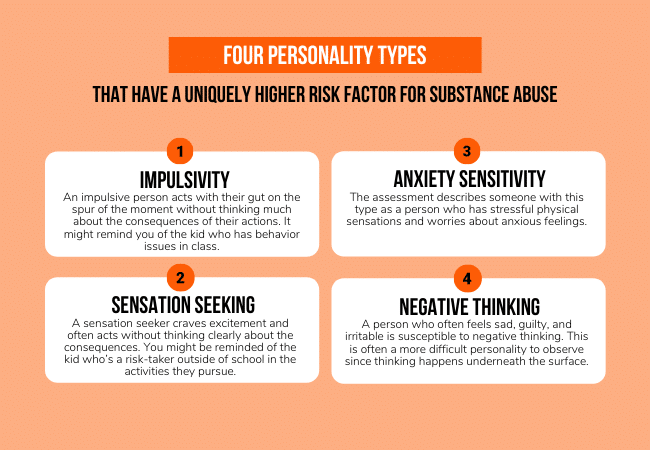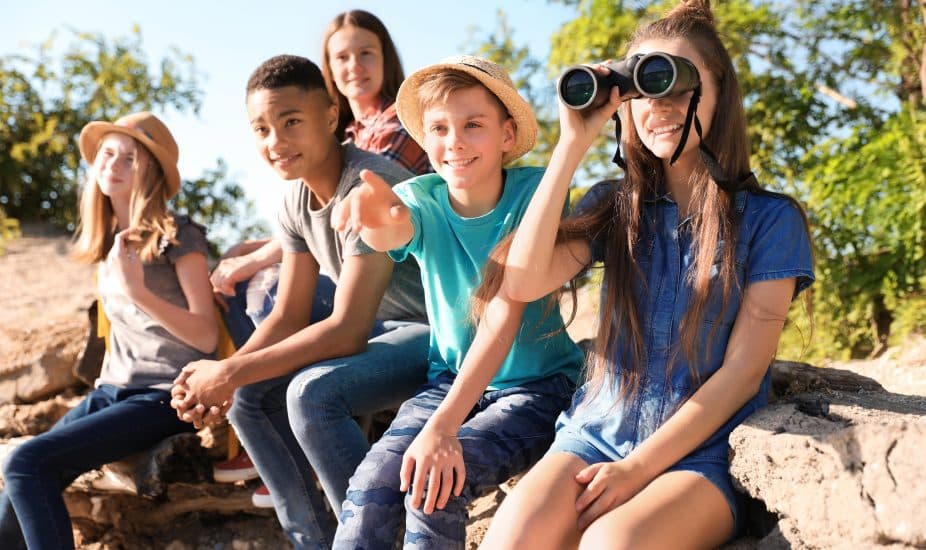This article is the third in a 5-part series on the 4 Personality Risk Factors.
Throughout history, there has been a particular subset of people who are more predisposed to taking extraordinary risks with their safety and wellbeing. They’re called middle school kids.
With little regard for their health or long-term consequences, they can be found jumping off buildings or running through traffic in every neighborhood around the world.
There’s often an implied correlation between kids who are out and about engaging in reckless activities and substance use.
Beyond mere rhetoric, researchers have come to the same conclusion:
“Individuals with higher levels of thrill and adventure seeking and disinhibition have been identified by numerous studies to be more likely to initiate substance use, as well as have higher levels of use for both specific substances and combined measures of substance use”.
Recent research sheds light on what makes one person more vulnerable to substance use issues than others, and it has to do with their personality. The research demonstrated that personality factors can be highly predictive of who develops problems with alcohol and substance misuse.
There are four personality types in particular that seem to have a higher correlation with struggles.

The question, then, is about protection and intervention.
How do we protect kids who haven’t yet developed the ability to use their executive reasoning?
The research, unfortunately, isn’t overly optimistic:
“Most researchers conceptualize sensation seeking as a stable trait which is unlikely to be reduced via intervention…”
To translate — we probably can’t stop them from thrill-seeking.
We might, however, be able to influence how they express themselves.
What does that look like?
- Give them permission to engage in more risky activities with appropriate safety gear. Let them “send it” on their mountain bikes, with the best helmet and pads money can buy. Go with them and promise to take a video.
- Keep track of their whereabouts: use technology tools like Apple’s Find My app or the Circle 360 app to know where they are and have regular check-in intervals.
- Limit their freedom. Adolescents want and need freedom. But, they haven’t yet balanced that desire for freedom with the ability to make wise choices. So, although it can be incredibly irritating to them, and taxing on you to listen to their complaints, limit their freedom.
- Give them a clear curfew and clear consequences.
- Give them a leash — make it clear where and how far they’re allowed to venture off.
- Keep tabs on who their friends are, and if they’re on social media, follow them. You might catch more than a few glimpses of what they’re up to on their Instagram Stories.
- And, speaking of social media, limit their ability to be inspired by or post reckless behavior. YouTube, especially, has an endless amount of footage of sensation-seeking activity that’s lauded by teens.
There’s a wise old saying about teenagers: “Hang on tight to make sure they survive until adulthood.” There’s a lot of truth to that sentiment.
If you have a kid who’s especially prone to taking uncalculated risks, all our best to you as you have a lot on your hands, and we’re here to support you weekly with our series called The Natural High Essentials. Sign up here to receive tips on how to talk to kids about drugs and alcohol and the science behind what we do – for educators and parents.
If you’d like to start from the beginning of our 5-part series on the 4 Personality Risk Factors, read our article here. Discover how to support kids with one (or more) of these risk factors in our 5-part series. We go over each personality type and how to guide kids well to make the healthiest, wisest choices in spite of their unique challenges.
Read the next article in our 5-part series on the 4 Personality Risk Factors here: anxiety sensitivity.
The 4 Personality Risk Factors Table of Contents:
- Introduction
- Impulsivity
- Sensation Seeking
- Anxiety Sensitivity
- Negative Thinking


